|
The sensation of dry feet feels like a distant memory after four rainy days on the GR 738. But on day five, I can pat myself on the back for making it through the solo part of my adventure. At the popular lodge La Martinette, a Belgian companion is waiting for me. In addition to good morale, Stefaan is bringing four days worth of food – a welcome resupply on a trail that does not pass through many towns. Sleepover parties with Pierre, Pierre and the 1970s Larousse After a warm night at La Martinette, we put on our rain gear to defy the showers coming at us from all sides on our 1.200 metre ascent towards the Refuge des Sept Laux. Above the treeline, the trail has transformed into an icy stream reaching up to our ankles. Soaked to the bone and shivering, we knock on the door of the fully booked refuge three hours later, but the grumpy staff show no remorse. Commanding us to wait outside, they collect our money and hand over the key to a dilapidated shed ten minutes away. “At least we’ll have a roof over our heads,” I cautiously try to salvage the situation. With red, swollen hands, I frantically peel off my wet clothes when we stumble inside. Stefaan picks a battle with the fire stove, while I crawl into my sleeping bag and wait for my extremities to regain some sensation. My feet finally start to tingle when we are joined by butcher Pierre and teacher Pierre, our new housemates. Pages ripped from a 1970s Larousse help keep the fire alive all evening. With the remainder of the encyclopedia, Pierre and Pierre subject us to a challenging game of guessing which word they read the description aloud to. Malheureusement, our grasp of the French language is not quite up to par. What could have been a miserable night in our tents, turns into a candle-lit sleepover party instead, with a three-course meal followed by a couple of beers – I did learn how to hike like the French just two days ago. The cherry on top of the cake is the starry 4 AM sky that heralds a better weather window for the coming days. Un pierrier de merde A humble rainbow brightens up the chilly morning, as we hike past several lakes. Though we only have one outfit on us, we manage to change multiple times an hour by putting on and taking off layers. I wonder what the birds must think of our constant metamorphosis, knowing all too well the answer is probably nothing at all. Nature couldn’t care less, which is one of the things I love about it. To avoid the remaining snow patches, we take a little detour and hop from one rock to the next all the way up to the Col de la Vache, where a griffon vulture circles overhead in search of carrion. A middle-aged hiker approaches from the opposite valley: “Good luck with your descent,” he snorts, “a pierrier de merde awaits you on the other side.” A serious scramble does require our utmost attention going down, but spotting a sunbathing chamois and a furry marmot family makes the effort worthwhile. Under the setting sun, we set up camp on a patch of grass by a little stream and enjoy our bivouac’s stillness with Grenoble’s gentle glow in the valley behind. For the love of crackers We take our time getting ready in the morning, while the sun dries our tents. Descending past the Refuge Jean-Collet, we admire the extensive views over the Chartreuse before toiling up a steep hill to the Col de la Sitre. With two gorgeous valleys stretching out on either side of the rim, I feel on top of the world both physically and mentally. By the Lac du Crozet, we run into our new pal Robert and his friends once again. “Are you excited to have tarte aux myrtilles at the Refuge de la Pra soon?” Thibaut beams. Unaware that blueberry pie was even an option, we are indeed thrilled by the prospect. Eventually, it is the fresh crepes on the sugar-ridden menu that manage to seduce us. We team up for a group bivouac by the Lacs Robert, trading our parmesan and olive oil for sips of beer. As the crackers and Nutella jar make their way around the circle, eyes close in pure delight at so much goodness. A spirited round of “Zhe Game” and some star gazing top off the night. All that separates us from society is a short descent to ski resort Chamrousse, where pop music blasts through giant speakers. Tourists stroll past market stalls selling regional produce, while their shrieking offspring go nuts on a Spongebob-shaped bouncy castle. A minute ago, we were tracing our way through a herd of goats. Now, days’ worth of unanswered texts light up our phones and I cannot help but stare at waitress' fake eyelashes as she takes our order. “Life in the mountains has its own pace,” I sigh. But my melancholy is short-lived, evaporating the minute our crepes and cappuccinos are served. Before we hop on the bus to Grenoble, I make sure to pick up a bottle of génépi from the market – a little something to ease the mountain nostalgia back home, just in case ... Practical info
0 Comments
“Why on EARTH would you want to hike in the mountains all by yourself?” Though far from the words of encouragement I am hoping for, my mom does make a fair point. Why DO I want to hike at least a good part of the GR 738: Haute Traversée de Belledonne solo? I mumble something about the need to leave my comfort zone after cocooning during the pandemic, but I suspect it is my fear of hiking and camping alone I really want to confront. As I swing my pack over my shoulder and say my goodbyes, I attempt to look confident, though in reality, I am terrified. What if certain stretches of the trail are too technical? What if there is still too much snow? What if a storm erupts when I am on a ridge? What if the guy I asked for advice in that Facebook group was right and I can’t handle the brutal changes in elevation? Secretly, I pray for an excuse to pop up, anything that will allow me to bail. But no such excuse presents itself, so off to the French Alps I go. Un orage exceptionnel The thunder makes my AirBnB in Aiguebelle shake at night, which does not ease my anxiety. A little note on the breakfast table in the morning does, however: “Chère Lien, if it may reassure you, last night's storm was truly exceptional. We are sure everything will be just fine.” As I make my way out of town, clouds dance around the peaks surrounding me. The abandoned Fort de Montgilbert – built around 1880 to keep an eye on the valley – looks eerie in the mist, encouraging me not to linger. Forest trails take me up and down hills all day until I reach the Baraque a Michel, an unguarded shelter in the woods, featuring nothing more than a wooden table and a tiny window that barely lets in any light. The predicted storm could hit soon. As I weigh my options, the sound of someone slamming on the brakes makes me look up. A man and his mountain bike are staring right back at me: “Will you sleep here tonight?” There it is, the number one question feared by most female hikers, closely followed by “Are you out here all alone?”, which just so happens to be his next inquiry. Debating whether I should make up an imaginary friend, I stutter: “Uhm, I am not sure yet. I will decide later.” Trying to keep a calm demeanour, I nudge him to leave: “Have a good rest of your day!” Luckily, he takes the hint. To my throbbing calves’ dismay, I gather my things and rush to the next cabin: the Baraque de la Jasse. Just as I have rolled out my sleeping pad and gotten acquainted with the resident mice, the thunderstorm erupts. Hail the size of marbles and violent gusts of wind batter against the thin walls all night. “Anything to not be in my tent right now,” I whisper to myself, as I drift off to sleep. Eau de chien mouillé It is still pouring in the morning. Rhododendron-lined trails lead me to the next shelter, where I kick off my shoes and wait for my body to stop shivering. Setting off alone, one of my biggest doubts was how I would handle challenging circumstances. When hiking with a partner, you do not have the luxury to throw off your pack and wallow in self-pity for hours. You keep it together. When hiking solo, well, you could. I am proud to notice that quitting does not feel like an option, however, even as I wiggle my soggy feet back into wet socks. The trail is narrow and rocky. The rugged contours in the fog and the sound of the river gushing in the valley make me suspect that the landscape must be stunning on a clear day. When the Refuge des Ferices finally appears around the bend, smoke is already blowing from the chimney. With another storm lingering, I call it home for the night and greet my roommates: six middle-aged hikers and one soaking wet husky. Over homemade bread, I listen to their stories about how the French are never quite satisfied, while the fire crackles nicely. Damp clothes hanging from every beam and nail in the room are checked impatiently for the first signs of dryness, but to no avail. One by one, my companions decide to throw in the towel and come back another day when the weather gods have been appeased. Tormented by their animated fantasies about warm showers, soft sofas and comfy sweaters, I retreat to my bunk. On doit manger bien
As the first sunrays clothe the mountain peaks in orange hues, I shiver in the shade in front of the refuge. “Judging by the white hair on my shoes, I believe your little friend may have used them as her mattress last night,” I confide in the husky’s owner, who chuckles and offers me a cup of fresh mint tea. “At least that gives me a valid excuse for their odour,” I argue. The fog feels like an old friend accompanying me on my ascent to the umpteenth col hidden from sight, as I set off solo again. But then my luck drastically changes: the clouds lift and a glorious valley appears at my feet. With a stupid grin on my face, I descend so cheerfully I could skip. Late afternoon, I pitch my tent outside L’Aup Bernard, where a group of friends is sneakily putting up bows and other decorations. “It’s Robert’s 30th birthday tonight,” one of them winks. “You sure didn’t spare any effort,” I applaud them, as a never-ending string of supplies emerges from their packs: a tablecloth, candles and enough food for a three-course meal. Robert jovially invites me to join the party, so I gladly nibble on crackers dipped in fresh hummus, sample the pasta with truffle pesto, devour a brownie while singing birthday songs and sip some génépi – a local herbal liquor – as a night cap. “The French don't mess around with their meals,” I note. “Ah yes, évidemment, one needs to eat well,” Robert shrugs. Way past hiker midnight, I crawl into my sleeping bag with a full belly and a big smile on my face. The trail may challenge, but it surely also provides. Turns out 65 kilometres is just enough to make my pre-departure fears feel like a million miles away. A month after leaving the Pyrenees, I already find myself heading south again. This time, Fadi and I plan to hike the GR5/GR55 from Landry to Briançon in the French Alps. "Don't worry, they're not live bullets" After stacking up on pains au chocolat and other essentials in the small town of Peisey-Nancroix, we head to the Palais de la Mine. This 18th century lead and silver mine mainly used to serve military interests. While the site is derelict today, the military presence is still a fact. Camouflaged snipers march past on their training day and when the shooting intensifies, an officer reassures us: “Don’t worry, they’re not live bullets.” Leaving society behind, we enter the Parc National de la Vanoise and get acquainted with its population of cows and marmots. The view of the glaciated dome of La Grande Motte in the distance rewards us for the long climb before we set up our tent by the beautiful Lac de la Plagne. The next day, the promise of a supermarket in Tignes helps us brave the frigid early morning temperatures. After climbing over the Col du Palet, a signpost prematurely informs us that the ski resort is a mere 20 minutes away. When we finally arrive 45 minutes later, hunger once again proves to be the best sauce as it turns our groceries into a feast. The town is eerily quiet outside of winter season, so we happily resume our climb through the national park and set up camp by the charming Refuge de la Leisse. Love at first sniff Our first encounter with patous awaits when the trail leads us down to the valley the next morning. These mountain dogs are trained to guard sheep and their white coats allow them to disappear in the crowd entirely, hence the advice to always walk around a grazing herd. As the sheep occupy the entire mountain flank, however, we have no choice but to move slowly and talk gently, hoping this will put their protectors at ease. Luckily, a few sniffs suffice for the dogs to categorise us as harmless, so no objection is made to our passage. Their professionalism stands in stark contrast to more aggressive encounters we've had with shepherd dogs in the past. Instead of barking and growling, they remain calm and focused. A steep climb brings us to the Col de la Vanoise, while menacing clouds announce a storm. We hastily descend, only stopping to have lunch when our campsite appears in sight. When a fine sample of lunch foods emerges from our backpacks, the Lac des Vaches soon honours its name: a curious cow confidently strides towards us and gives my phone and hand sanitizer an inquisitive lick, before examining our pasta, crackers and cheese. I learn exactly how long a cow tongue is, as I narrowly dodge hers while stuffing everything into my pack. Soon after we set up the tent, the storm breaks loose. The mountains are blanketed in a dense fog and eventually disappear entirely, while lightning lights up the sky. Tomorrow’s forecast is even more bleak, so we grant ourselves a day off in Pralognan to dry up and rest. "Allez, allez, allez!" Our early wake-up call is followed by a familiar pattern: walking up forested slopes until we reach the tree line to then climb quite a bit more. Snowfields and cairns adorn the trail as we near the Col de Chavière. After covering the final stretch on slippery scree, we find ourselves on the ridge between two valleys at 2,796 metres. Behind us, the Mont Blanc. In front, the Italian peak of Monte Viso. A glorious, yet taxing descent awaits. When we reach Modane, a two-hour picnic on the city hall’s shaded steps is in order to appease our striking knees. After plundering the supermarket, several pilgrimage stations lead us to the Sanctuaire Notre Dame du Charmaix, a chapel dating from 1401. Deserted ski resort Valfréjus is just around the corner, after which we continue upstream through the forest. “Allez, allez, allez!” We briefly feel encouraged by the farmer’s enthusiastic cheers, until we realise they are meant to spur on his cows to cross over into another pasture, not help us get up the hill. We make use of the meadow his herd no longer inhabits and pick a flat spot to set up our tent. A slice of Italy The cold morning breeze makes my eyes tear up, while I gratefully wrap myself in all my layers. The short climb to the Col de la Vallée Étroite makes the discomfort worthwhile, however. By the time we reach the cross – the former French-Italian border – the clouds have lifted and majestic rock formations appear. A baby chamois running after its mother by a little lake seals the deal. To put it in Dean Martin’s words: that’s amore. Up until the 1947 Paris Peace Treaties, this part of the valley belonged to Italy. Even today, the character of the hamlet Les Granges de la Vallée Étroite is unmistakably Italian. The refuge boasts both French and Italian flags and for the first time in France, my cappuccino does not come with three centimetres of whip cream on top. For the love of well-engineered paths
After leaving our final campsite at the Lac de Cristol, Briançon quickly appears down the valley. The town was fortified by French military architect Vauban in the 18th century and we look forward to catching a glimpse of the UNESCO World Heritage site tonight. According to the signpost at the Col de Barteaux, taking the high-level route via Crête de Peyrolle should only take 20 minutes longer than the lower variant. Described by the guidebook as a fine ridge walk that offers extensive views, we take our chances and climb up to the Croix de la Cime. The panoramas are stunning and the weather is on our side: clear vision, sunny, no wind. The ridge trail is narrow, however, and the deep abyss on both sides soon makes my knees a little shaky. A misstep could have disastrous consequences, but the right amount of focus makes it feasible. That is, until the trail is reduced to a scramble on the side of the wall, demanding our utmost concentration. The guidebook offers no consolation, stating that the descent will commence with a steep and “nasty stretch” on loose rocks before reaching a “well-engineered path.” Suicidal would have been a better choice for words in my opinion, but we clamber on. When we reach the tree line, we take a breather by a derelict blockhouse with a newfound appreciation for life. As we zigzag down the final slopes, the famous Fort des Salettes appears. Never have I been this relieved to set foot on paved roads. Our agony fades quickly and gives way to hunger, so we celebrate another 150 kilometres on the books with Briançon’s best pizza. Clacclacclacclacclacclacclac. Ah, the familiar sound of a family vacation. I turn around to see my dad standing on a small hill, currently on his 15th attempt at shooting the perfect panorama with his Fujifilm. A disapproving nod is followed by the 16th clacclacclacclacclacclacclac, while the rest of us eat our homemade sandwiches and stare out over the Strait of Dover. The English shoreline is clearly visible from the top of Cap Blanc-Nez – the famous chalk cliff in northern France. Our hike starts at the Dover Patrol Monument, the obelisk dedicated to the British Royal Navy for its valuable role in defending the Strait of Dover during the First World War. From the monument, we stroll along the top of the cliffs. The stunning views tempt visitors every day to ignore the signs warning them to stay clear of the edge, as chunks of the fragile chalk walls have suddenly broken off in the past. But this is a risk the young couple ahead of us seems to be willing to take for the perfect selfie. After a few kilometres, the trail leads us down to the beach. Eight years ago, we spotted a stranded harbour porpoise here – a type of toothed whale – but now all we find is a lifeless jelly fish. “And a cat!” Fadi points to the cliff above us, where a black feline is sitting next to an old bunker, one of the landscape’s many souvenirs of its military past. We stop for coffee in Wissant – the next town over – and admire the kite surfers’ determination to catch a wave on this windless day. At low tide, we follow the beach all the way back. When we reach the staircase leading up to the parking lot, I sense some hesitation. “I have never swum in the North Sea before,” Fadi admits. The cold September breeze makes a warm coat no luxury, but Fadi packed his swim shorts nonetheless, eager to tick off another box on his to-do list. After a little persuasion, he decides to go for it, to an elderly couple’s great concern. After his refreshing North Sea baptism, the winding trail lead us back up the cliff through grassy slopes, overlooking fields and sea. Practical info
"The Pyrenees aren't that far. In case you feel like joining for a bit ..." If Katrien was just being polite, she is in for quite the surprise. A week after receiving her message, my train ticket is booked. I will join her for a stretch of 126 kilometres on the GR10, one of three long-distance hiking trails cutting through the French-Spanish mountain range. While Katrien and I are strangers, acquainted only through the world wide web, something connects us. We had both planned to start our thru-hike of the Pacific Crest Trail in April, but spent the last few months mourning our cancelled trek during a nationwide lockdown instead. To not let summer go to waste, Katrien now aims to thru-hike the Pyrenees from the Atlantic to the Mediterranean coast. Our adventure begins in the small town of Gavarnie, where I snap a photo of the first cows I spot, eliciting a giggle. "I also took lots of cow photos during my first week, but I have gotten used to them now," Katrien explains. Right, rookie mistake. When I fall flat on my face that afternoon while searching for a suitable campsite, I bid my credibility as a competent hiker farewell. "All things considered not an unsuccessful day. I did make it up the hill after all," I comfort my ego, as I savour the first of many instant soup flavoured vermicelli bowls. Pyrenese wake-up calls "I think a horse is licking my tent." As I unzip my door, I confirm Katrien’s suspicion: a brown stallion is indeed sniffing her humble abode. Her one-person bedroom not only comes with a mountain view, it apparently also includes a free wake-up service. The day of the self-doubt – also known as day two on any multi-day hike – starts with a long descent towards the small town of Luz-Saint-Sauveur. My body is tired from yesterday’s efforts and not quite adjusted to the exertion yet. Having gone through this phase before, I know that I will probably feel more confident tomorrow, but fail to silence my inner critic. Tempting though it may be to call it a day by lunchtime, we have another 800 metres of ascent waiting for us. Once we start our climb, my body luckily seems to have found its rhythm. By the time we reach the top, I am on cloud nine. Even the extra kilometre walked in search of a proper campsite – flat and free of cow carcasses – does not bother me in the slightest. Head in the clouds I wake up early to a dense blanket of clouds lingering in the valley below us and observe the spectacle while crunching my muesli. As the temperature rises and the valley starts to overflow, we pack up our things and hit the trail. After a quick descent to Barèges – with obligatory coffee and quiche break – the real work starts. We scramble past the many day-trippers and soon have the high-altitude mountain lakes mostly to ourselves. Over the next 12 kilometres, we gain 1,200 metres in altitude, but the view from the summit successfully soothes our sore legs. We pitch our tents by the most pristine lake until a disgruntled couple marches past, tent dangling over their arms. They inform us that we are still on the outer edge of the nature reserve, in which it is illegal to camp. To avoid sharing their fate of getting fined, we make our way to the bivouac site three kilometres further down. A little late to the party, the hunt for a decent spot begins. Already off trail, we decide to continue down the alternative route to Lac d’Oredon in the morning. The sharp descent is followed by a steep climb, only to descend again to Lac de l’Oule and then climb back up. By the time we close in on the Col de Portet at 2,215 metres, a thick mist envelops us. With the view gone, my ankle hurting, drizzle permeating our clothes and exhaustion setting in, I drag myself forward. Our pace slows down even more when we find ourselves stuck behind a herd of cows lining up to pass the slope’s narrow parts. We eventually set up camp in the rain and brace ourselves for a cold night. Homeless to hot tub My whining ankle turns into a fully-fledged limp by the time we reach Vielle-Aure. Time to rest the tendons. While Katrien takes on the next mountain, I skip 11 kilometres ahead by bus. With high hopes, I make my way to Loudenvielle’s one and only campground to discover it is fully booked for the night. The tourism office informs me that randonneurs – long-distance hikers – can camp on a small grassy patch behind the caravan parking lot. Less than idyllic, but a solid plan B. As I wait for Katrien, the town's stares are glued to my skin even more than the layers of sweat and sunscreen I accumulated over the past five days. The question ‘hiker or homeless’ is written all over their faces as passers-by assess my situation: two wet tents left out to dry, muddy pants, greasy hair and one foot elevated on my pack. But along with Katrien, our lucky break arrives. She manages to secure a spot for us on the five-star campground after all, allowing us to indulge in the hot tub and enjoy our first shower of the week. After a dinner that is not instant soup vermicelli – hello, actual veggies – our spirits have been lifted. The sound of panting tourists
It is well past noon when we part ways with the town’s many comforts and start our lengthy climb. A few hours later, we are greeted by tens of griffon vultures at the summit of Couret d’Esquierry. With a wingspan of up to 2.8 metres, these majestic creatures do not fail to impress. "Why don’t you hold up your leftover sausage and see what happens," I jokingly suggest, immediately changing my mind when a bird the size of my pack soars overhead. After a short night at the top, we exchange the seclusion of the mountains for hordes of panting tourists hauling themselves uphill as we pass Astau’s parking lot. Our sense of solitude is restored once again when we leave the Refuge Espingo behind and continue ascending. Three last bumps in a row put our calves to the final test before we enjoy a beautiful sunset with the Spanish snow-capped mountains as our backdrop. The 1,900-metre descent to Bagnères-de-Luchon transforms my knees into rusty old hinges the next morning, but the end is near. When we reach the sleepy town, we wonder whether it has been placed under lockdown again. That is, until a glance at our watches informs us it is merely siesta time. A well-earned lunch and ice cream later, Katrien and I say our sweaty goodbyes as I start my journey home, confident I will be back someday to use my guidebook’s pages left unturned. |





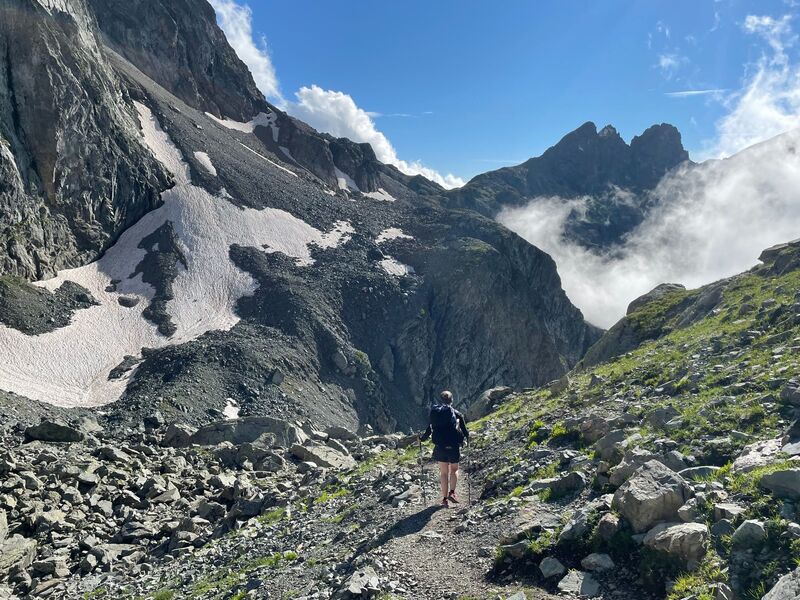
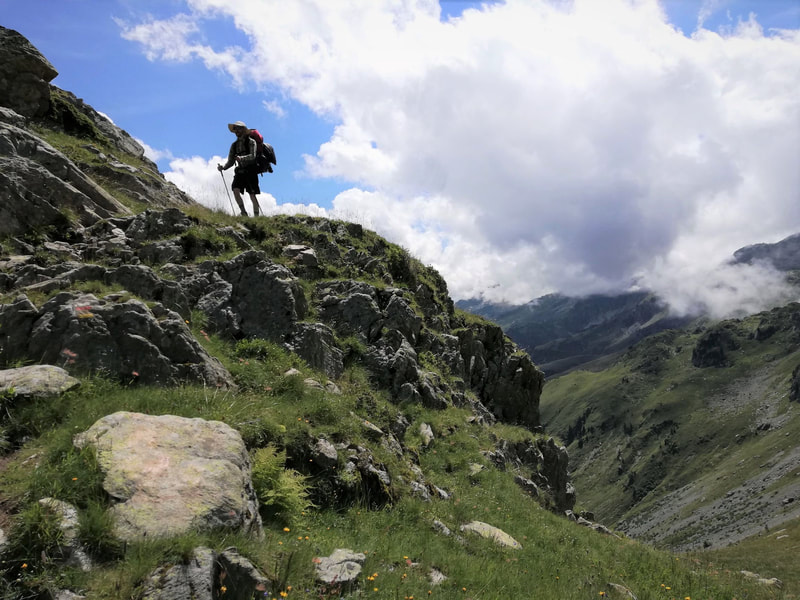



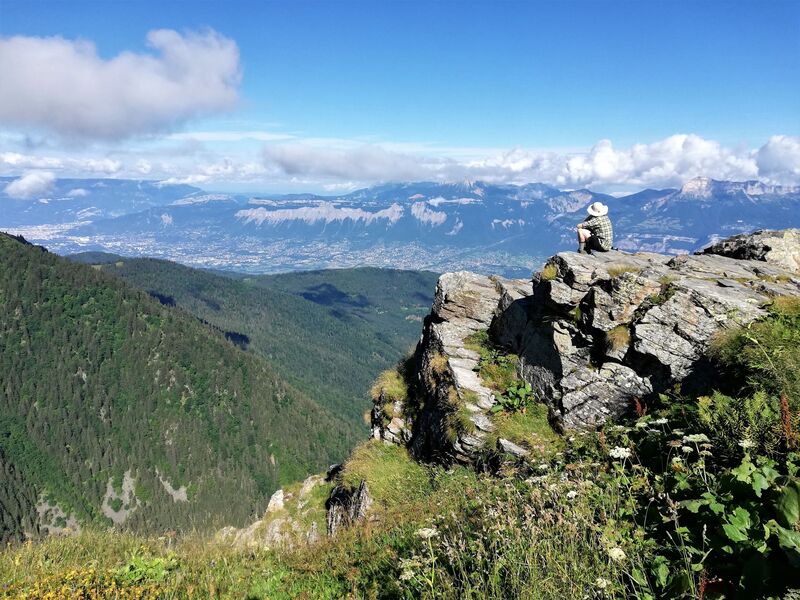


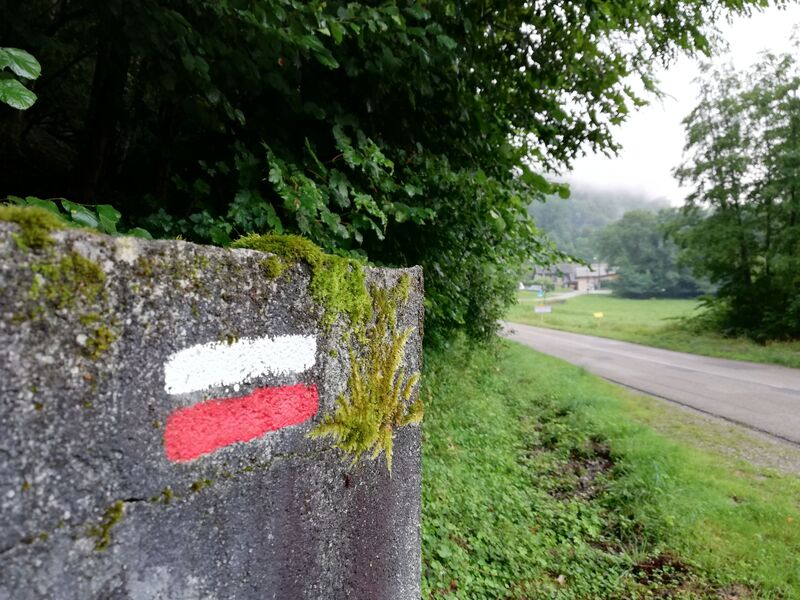





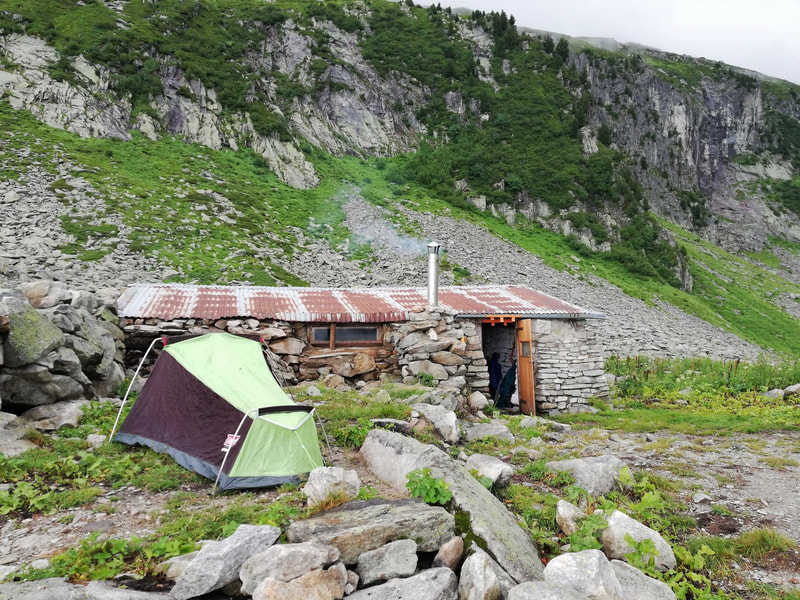




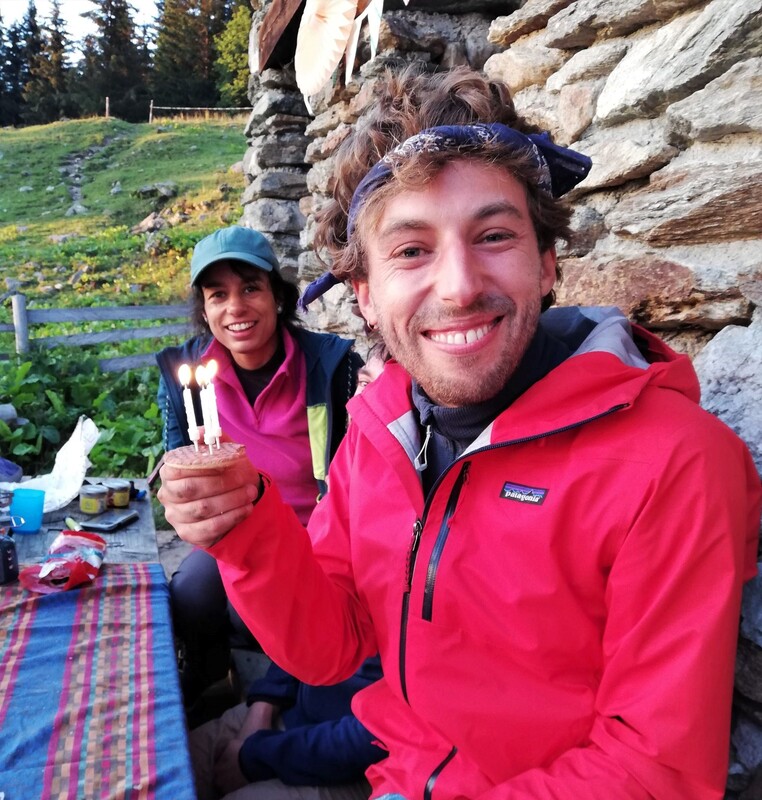
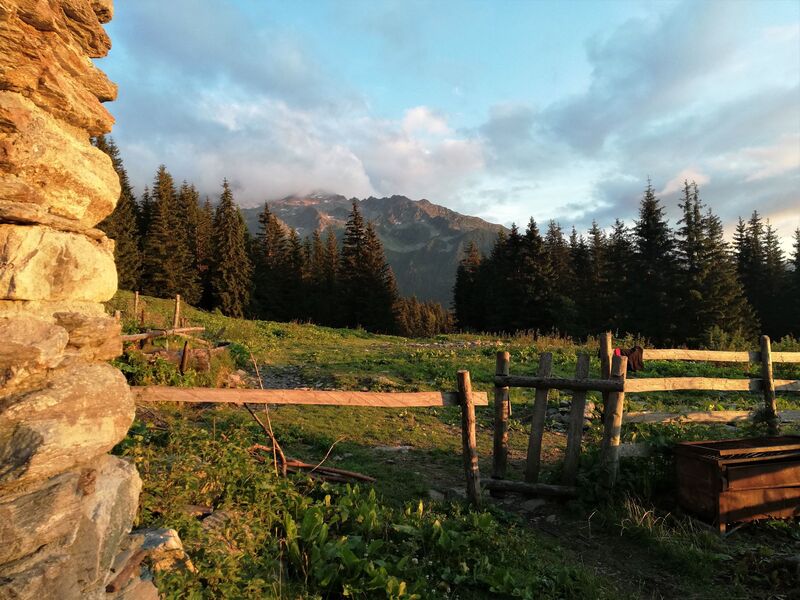


















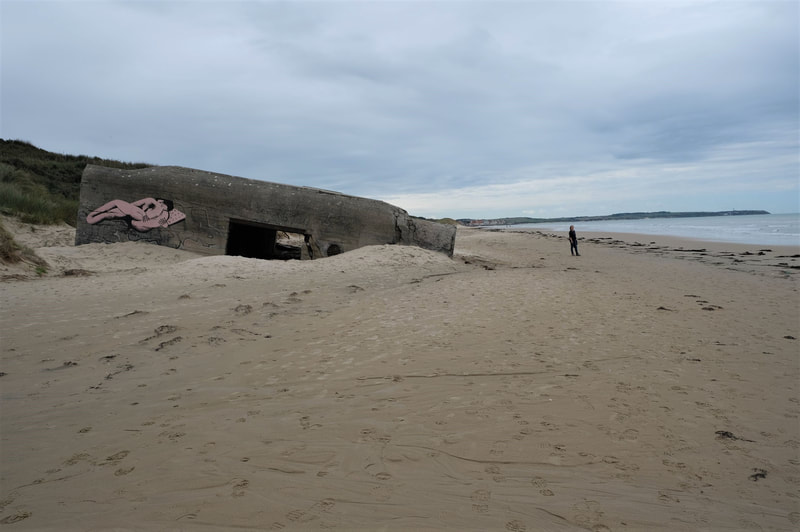





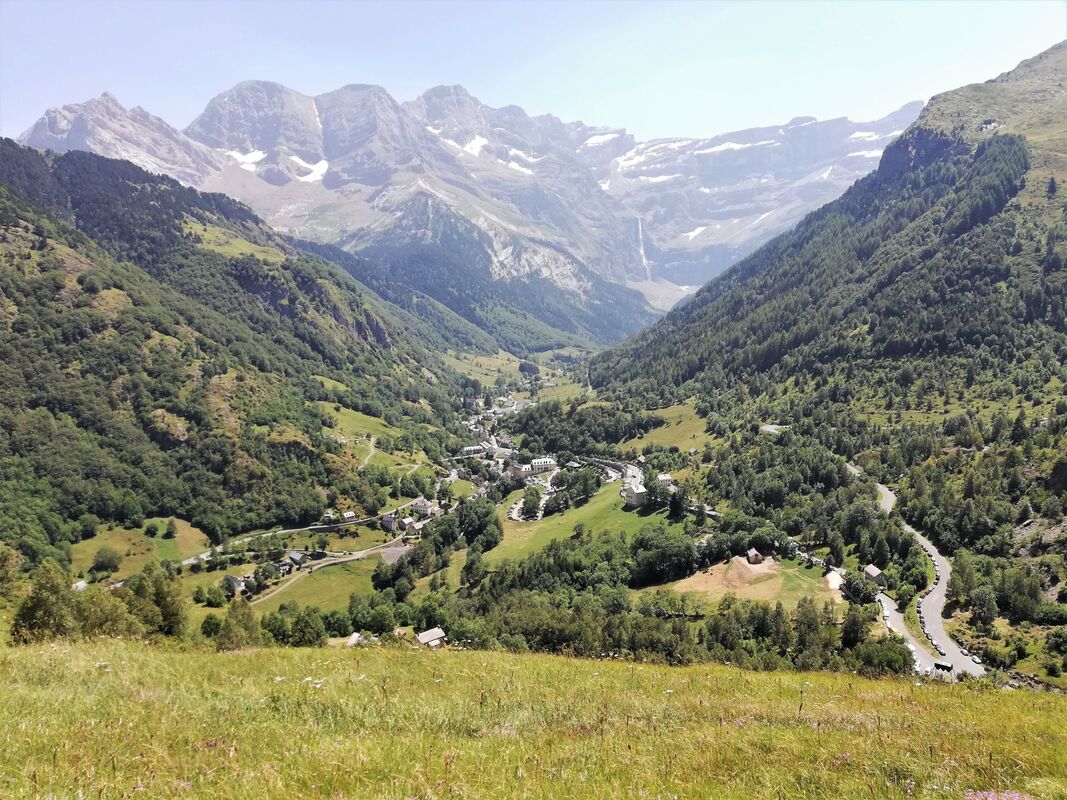

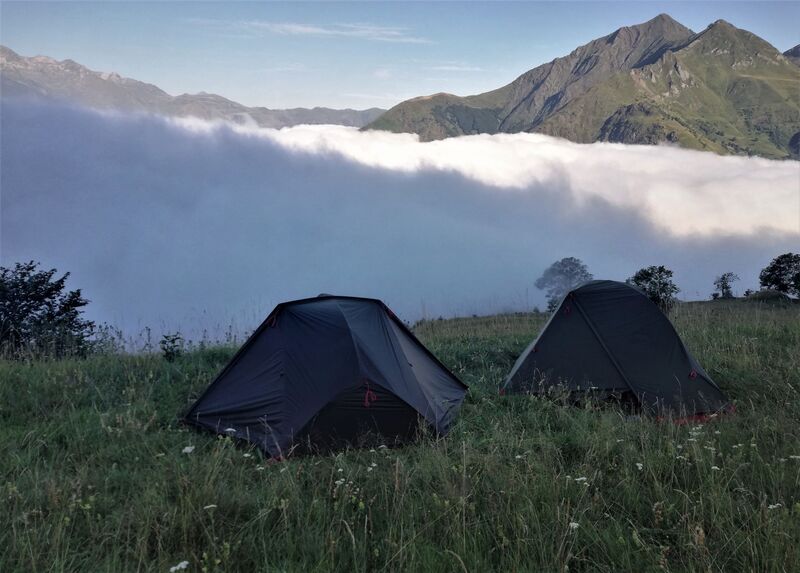



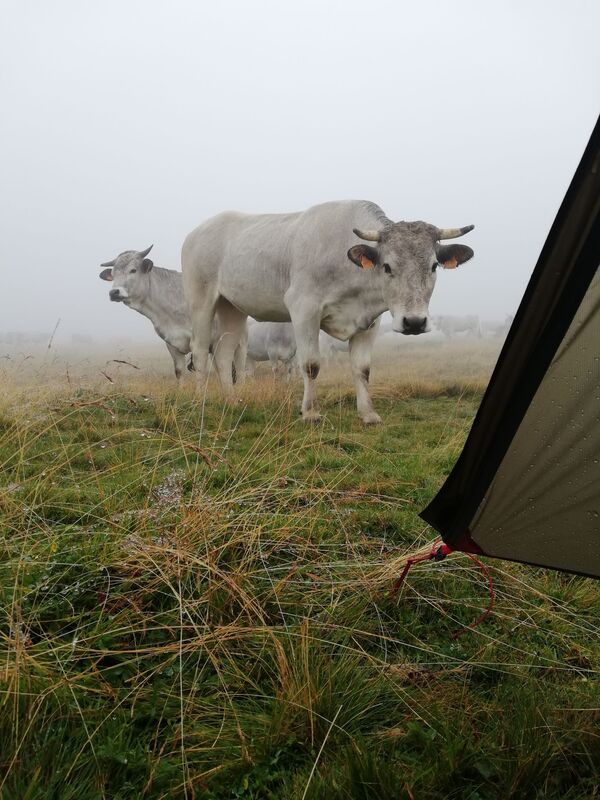





 RSS Feed
RSS Feed
